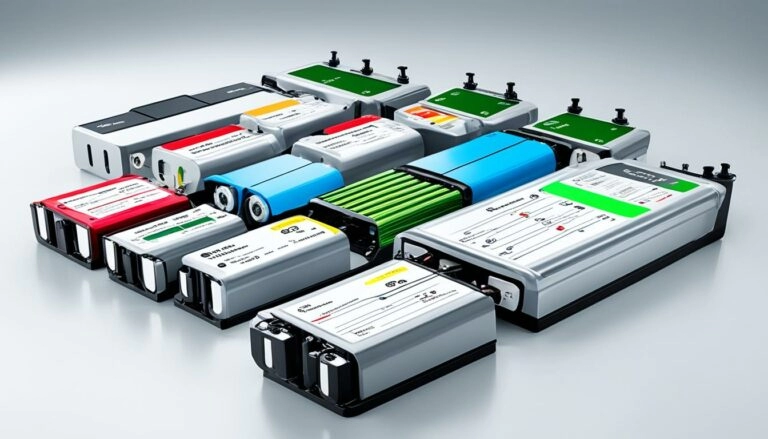Understanding the Weight of Car Batteries and Their Impact on Performance
The weight of a car battery plays a crucial role in determining a vehicle’s range and overall performance. While heavier batteries can extend a vehicle’s range, they may also negatively affect its dynamics, including suspension and steering. Striking the right balance in battery weight is essential for electric vehicle manufacturers.
Part 1: What’s Inside a Car Battery?
Car batteries, often hidden beneath the hood, are surprisingly complex. Understanding the construction of car batteries helps us appreciate why they weigh what they do.
Key Components of a Car Battery
- Lead Plates: Lead plates, also known as lead electrodes, are the heaviest components in a battery. These store and release energy, playing a pivotal role in the battery’s function. The more lead plates a battery contains, the heavier it will be. These plates are often coated with lead dioxide, which adds to their weight.
- Electrolyte: The electrolyte is a solution of sulfuric acid and water, which is crucial for the chemical reactions involved in storing and releasing energy. While not as heavy as the lead plates, the electrolyte still adds considerable weight to the battery.
- Separators: Separators, made from materials like fiberglass, prevent the lead plates from touching and short-circuiting. Although they are lightweight, these components are essential for ensuring the safe operation of the battery.
- Casing: The casing holds all the internal components together. Typically made from durable plastic or metal, it must be robust enough to protect the internal parts while remaining lightweight.
The Heaviest Component
Without a doubt, the lead plates are the heaviest components in a car battery. Their weight significantly contributes to the battery’s overall weight, increasing with the number of plates.
Part 2: Car Battery Weight Composition
To better understand the factors that influence the weight of car batteries, let’s look at the main components of a car battery system. The total cost of a car battery system includes the cells, the Battery Management System (BMS), and the battery pack system, which consists of functional components, wire harnesses, structural parts, and more.
For instance, in early Tesla models, the battery system accounted for approximately a quarter of the vehicle’s total price. This high cost is one of the reasons why electric vehicles are expensive.
Basic Components of a Lithium-Ion Battery
For lithium-ion batteries, the basic unit is the cell. A typical cell structure includes:
- Cathode: Made of lithium compounds.
- Anode: Usually made of carbon materials.
- Electrolyte: A non-aqueous liquid electrolyte.
Additionally, the Battery Management System (BMS) is also integral, ensuring safe operation and managing the battery’s power output.
Part 3: 8 Types of Car Batteries
Car batteries are not all the same; they come in various sizes, weights, and technologies. Let’s explore the most common types and their typical weights.
1. Lithium-Ion Batteries
Lithium-ion batteries are widely used in electric and hybrid vehicles due to their high energy density, long lifespan, and relatively lightweight design. These batteries are more expensive than traditional lead-acid batteries but offer superior performance and efficiency. A standard lithium-ion battery weighs between 10 and 15 kilograms. Their light weight is due to materials like lithium and other light metals, yet they store more energy than lead-acid batteries.
2. Nickel-Metal Hydride (Ni-MH) Batteries
Nickel-metal hydride batteries are another common type used in electric and hybrid vehicles. They are typically heavier than lithium-ion batteries but offer reliable performance in electric and hybrid vehicles.
[Continue listing other battery types…]
For more information on lithium-ion batteries and their differences, check out Lithium vs Alkaline Batteries: Why Lithium Ion Batteries.
Types of Car Batteries
Nickel-Metal Hydride (NiMH):
NiMH batteries use nickel hydroxide as the positive electrode active material and a hydrogen-absorbing alloy as the negative electrode active material. The electrolyte is a potassium hydroxide solution. These batteries are known for their low cost, mature technology, and long lifespan. However, they have lower energy density and are relatively bulky.
Lead-Acid Batteries:
Lead-acid batteries have been around for over a century and are known for their reliability and cost-effectiveness. These batteries are commonly found in vehicles and typically weigh between 15 and 25 kilograms due to the substantial amount of lead plates and sulfuric acid electrolyte. Lead-acid batteries are affordable and provide sufficient power for most vehicles’ needs. The electrodes are primarily made of lead and its oxides, while the electrolyte is a sulfuric acid solution. While lead-acid batteries are affordable and offer good low-temperature performance, they suffer from lower energy density, shorter lifespan, and bulkier size.
Lithium Iron Phosphate (LiFePO4) Batteries:
Lithium Iron Phosphate (LiFePO4) batteries use lithium iron phosphate as the positive electrode material. These batteries offer excellent thermal stability, low safety risks, and a long lifespan. However, they have lower energy density and perform poorly in cold temperatures.
Ternary Lithium-Ion Batteries:
Ternary lithium-ion batteries use lithium nickel manganese cobalt oxide as the cathode material. These batteries have high energy density, a long cycle life, and good low-temperature stability. However, their stability at high temperatures can be a concern.
Nickel-Cadmium Batteries:
Nickel-Cadmium (NiCd) batteries deliver 1.2V and offer a lifespan of up to 500 cycles. They can operate at a discharge temperature of -20 °C to 60 °C, with a charging temperature range of 0 °C to 45 °C. NiCd batteries also have strong overcharge resistance.
AGM (Absorbent Glass Mat) Batteries:
AGM batteries are an improved version of traditional lead-acid batteries, using glass mats to absorb the electrolyte, which makes them spill-proof and more durable. These batteries typically weigh between 20 and 30 kilograms and are often used in high-performance vehicles with advanced electronic features.
Other Battery Technologies:
In addition to the batteries mentioned above, there are various other battery types, such as supercapacitors, lithium cobalt oxide (LiCoO2) batteries, and graphene batteries, each with unique advantages and disadvantages. The choice of battery type depends on the specific automotive needs and requirements.
Clearly, lithium-ion batteries are typically significantly lighter than lead-acid batteries. However, the choice of vehicle battery is influenced by various factors, including the vehicle’s needs and the owner’s budget.
Factors Affecting Car Battery Weight
The weight of a car battery directly affects driving range, vehicle dynamics, suspension, and steering components. Therefore, managing battery weight is essential in electric vehicle (EV) manufacturing.
Several key factors determine the weight of a car battery:
- Battery Type
The weight of a car battery is primarily determined by its type and capacity. The most commonly used types are currently lithium-ion batteries, nickel-manganese-cobalt (NMC) lithium-ion batteries, and solid-state batteries. Lithium-ion batteries are favored for their high energy density, long lifespan, and low self-discharge rate. However, their high cost and limited capacity necessitate larger batteries to extend driving range, resulting in heavier battery packs. - Battery Capacity
Battery capacity, measured in amp-hours (Ah), indicates the amount of electrical energy the battery can store. A higher capacity allows the car to travel longer distances between charges, but it also increases the battery’s weight. Therefore, the larger the capacity, the heavier the battery.
What Factors Affect the Weight of a Car Battery?
1. Battery Capacity
A key factor influencing the weight of a car battery is its capacity. The larger the battery capacity, the heavier it tends to be. The capacity of a battery, typically measured in Ampere-hours (Ah), determines how much electrical energy it can store. For example, a 100 Ah battery will naturally be heavier than a 50 Ah battery because it requires more lead plates and electrolyte to store the additional energy. If your vehicle has high energy demands, you may need a higher capacity battery, which will increase the battery weight.
2. Density of Car Battery Materials
The weight of a car battery is also affected by the density of the materials used, such as the positive and negative plates and the electrolyte. Different manufacturers may use materials with varying densities, leading to differences in battery weight. Higher-quality materials, while potentially heavier, can offer enhanced performance and longevity. For instance, thicker lead plates can store more energy and have a longer lifespan, but they add to the overall weight of the battery. Similarly, premium separators and casings can improve durability but also contribute to the battery’s weight.
3. Battery Size
Battery size directly impacts its weight. Larger batteries tend to be heavier because they require more materials to construct. The physical dimensions of the battery—its height, width, and length—dictate the amount of material used, and thus the battery’s weight. For example, a battery designed for a compact car will be smaller and lighter than one designed for a larger vehicle like an SUV or truck. The bigger the battery, the more lead plates and electrolyte it will contain, leading to an increase in weight.
4. Number of Cells
Car batteries are composed of multiple cells, each contributing to the battery’s overall voltage and capacity. The number of cells in a battery directly affects its weight, as more cells require additional materials. For example, a typical 12-volt lead-acid battery contains six cells, while a 24-volt battery contains twelve cells. The more cells a battery has, the greater its weight will be. This is especially true for batteries used in larger vehicles or those with high power demands.
5. Car Battery Casing Construction
The construction of the car battery casing also contributes to its weight to some extent. Some manufacturers opt for more robust casings to protect their batteries, which adds to the overall weight. Therefore, more robust casings typically result in heavier batteries.
6. Vehicle Size and Weight
The weight and size of the vehicle itself can also influence the battery’s weight. For example, batteries used in large SUVs are typically heavier than those used in small cars. Battery weight and capacity depend on vehicle size and performance needs.
7. Other Factors
Several other factors can also affect the weight of a car battery. These factors include the type of charging system and charging speed, the vehicle’s body material, and the electrical system design.
Car Battery Weight Breakdown
The weight of different types of car batteries can vary significantly:
- Traditional lead-acid car batteries typically weigh between 11 kg and 22 kg.
- However, electric vehicle batteries are much heavier, often weighing between 250 kg and 450 kg, depending on the battery type and capacity.
Battery weight is also related to capacity. For example:
- A 45Ah battery weighs approximately 12.5 kg, while a 110Ah battery weighs around 24.5 kg.
Please note that these figures may vary depending on the specific battery model and manufacturer.
Compared to the engine and transmission in traditional internal combustion vehicles, electric vehicle batteries are much heavier. If battery weight is calculated solely based on cell density, it could be a significant disadvantage for electric vehicles.
For example, the cell weight of an 80 kWh battery can reach 400 kg for ternary lithium batteries (NMC/NCA) and 485 kg for lithium iron phosphate batteries (LFP). This weight only accounts for the cells and excludes external components like housings, insulation, and cooling systems, which add to the overall battery weight.
Impact of Car Battery Weight on Performance
The weight of a car battery doesn’t just passively affect the vehicle; it has a direct impact on performance. The impacts are:
Fuel Efficiency
Heavier batteries can reduce fuel efficiency. The added weight requires more energy to move the vehicle, reducing performance. A heavier vehicle requires more effort from the engine or motor, potentially reducing fuel economy and range. This is a crucial factor, especially for electric vehicles, where battery weight can significantly affect driving range.
The Impact of Battery Weight on Electric Vehicle Performance
Energy Efficiency
When an electric vehicle’s battery is heavy, the motor must work harder to move the vehicle, which increases energy consumption. As energy efficiency becomes increasingly important, reducing battery weight can have a significant impact.
Handling
Weight distribution is crucial for a car’s handling characteristics. A heavier battery can change the vehicle’s balance, especially if the battery is located in the front or rear. This change in weight distribution can affect how the car handles, especially when navigating sharp turns or performing quick maneuvers.
Acceleration
Extra weight reduces a car’s acceleration performance. A heavier battery requires the motor to use more power to achieve the same acceleration. This effect is most noticeable in smaller vehicles or vehicles with less powerful engines.
Battery Life
Larger capacity, heavier batteries can provide longer-lasting range. They can provide more consistent power over time and are less prone to rapid discharge. However, this comes at the cost of increased weight. If you need a battery to handle frequent short trips or power numerous electronic devices, then a larger capacity battery may be more suitable.
For more information on how battery capacity and performance affect your electric vehicle, check out our article on How Long Do Lithium Batteries Last.
Summary
In conclusion, the weight of an electric vehicle battery directly impacts the performance and range of the electric vehicle. Manufacturers must strike a balance between the weight of the battery and the performance of the vehicle. As battery technology continues to advance, the weight of car batteries may be optimized in the future. Battery manufacturers are working to increase energy density while reducing battery weight, thereby improving vehicle performance and extending battery life without compromising performance.
Related Tags:
- KHZH
- Electronic Engineering Writer








